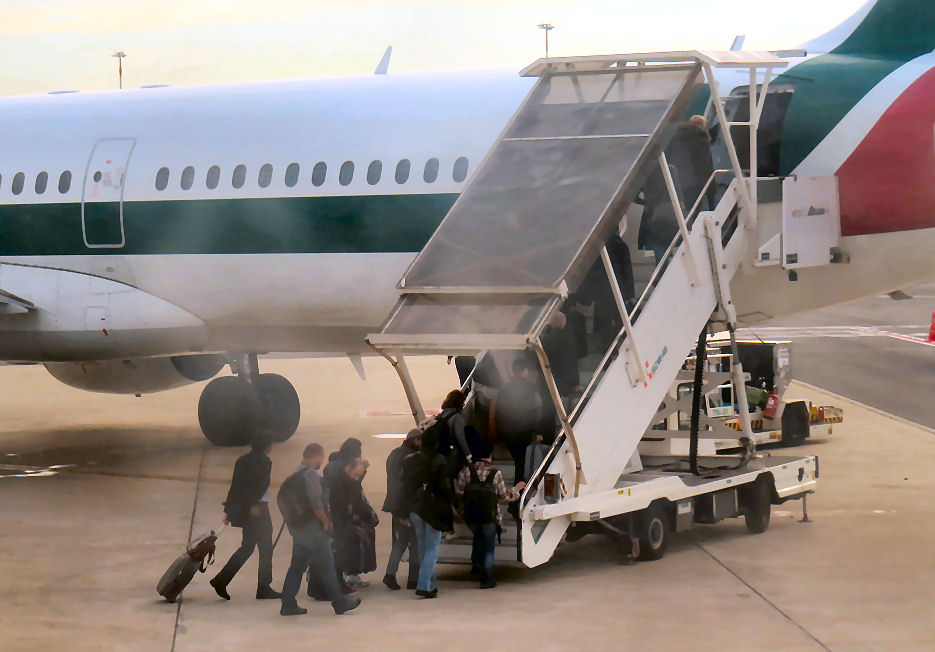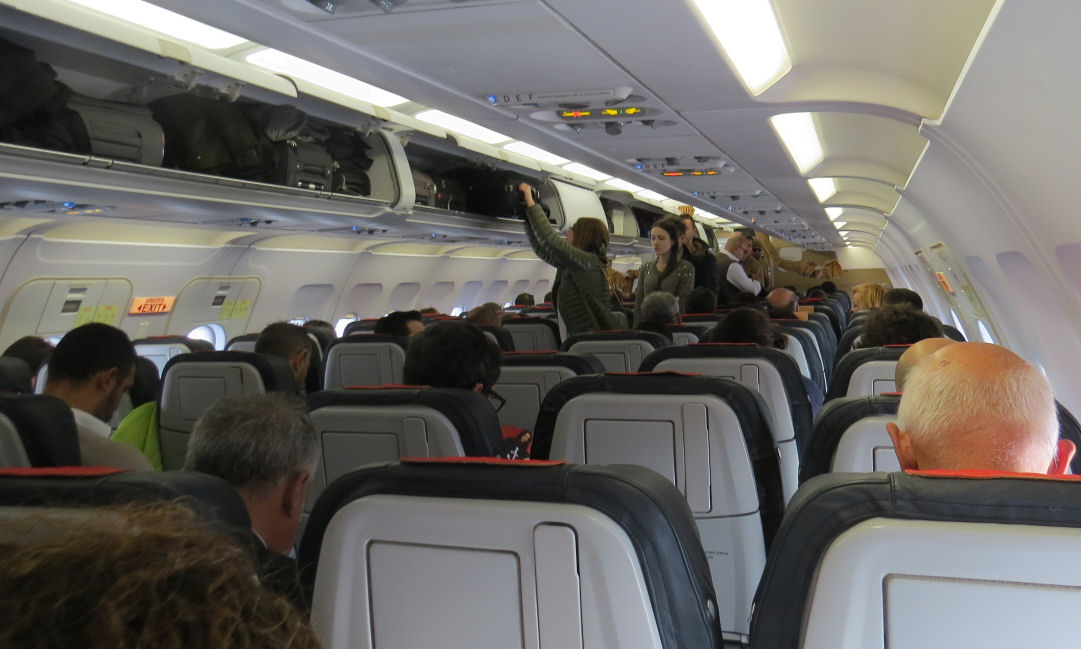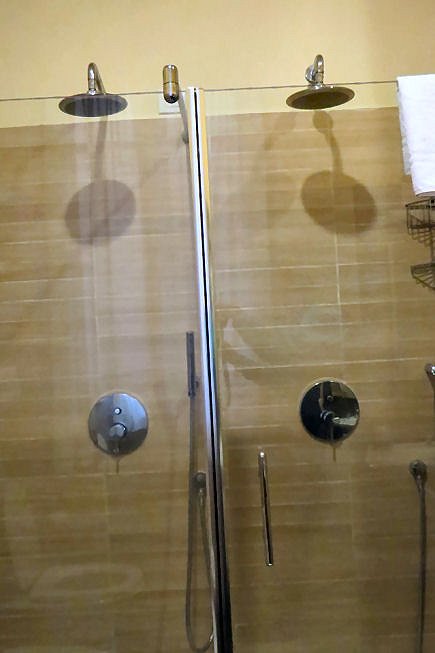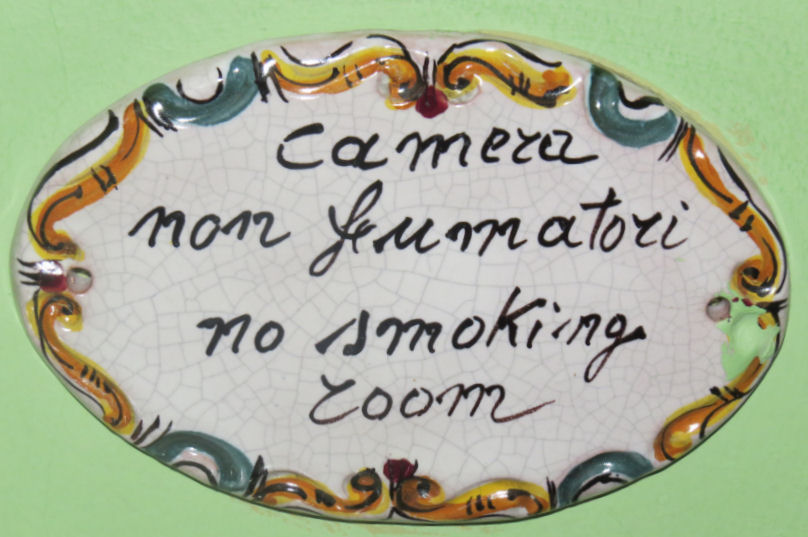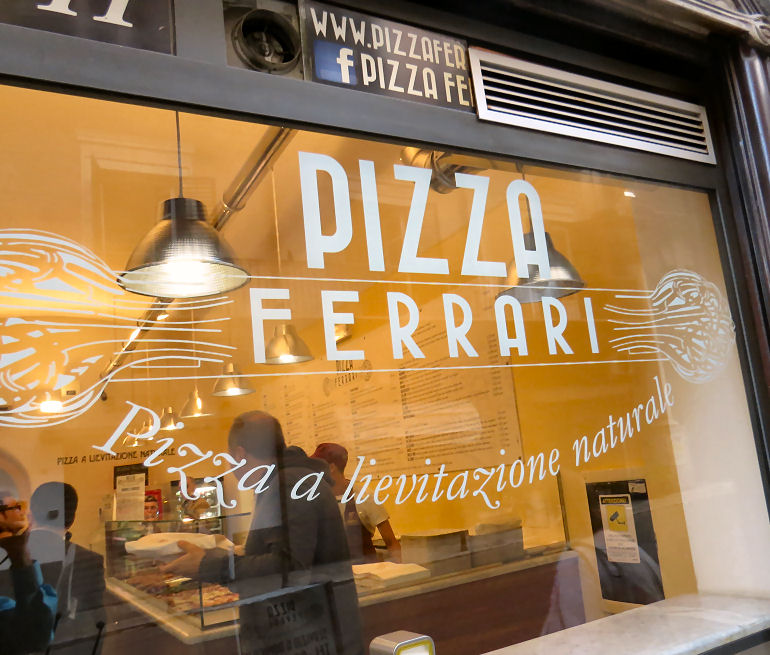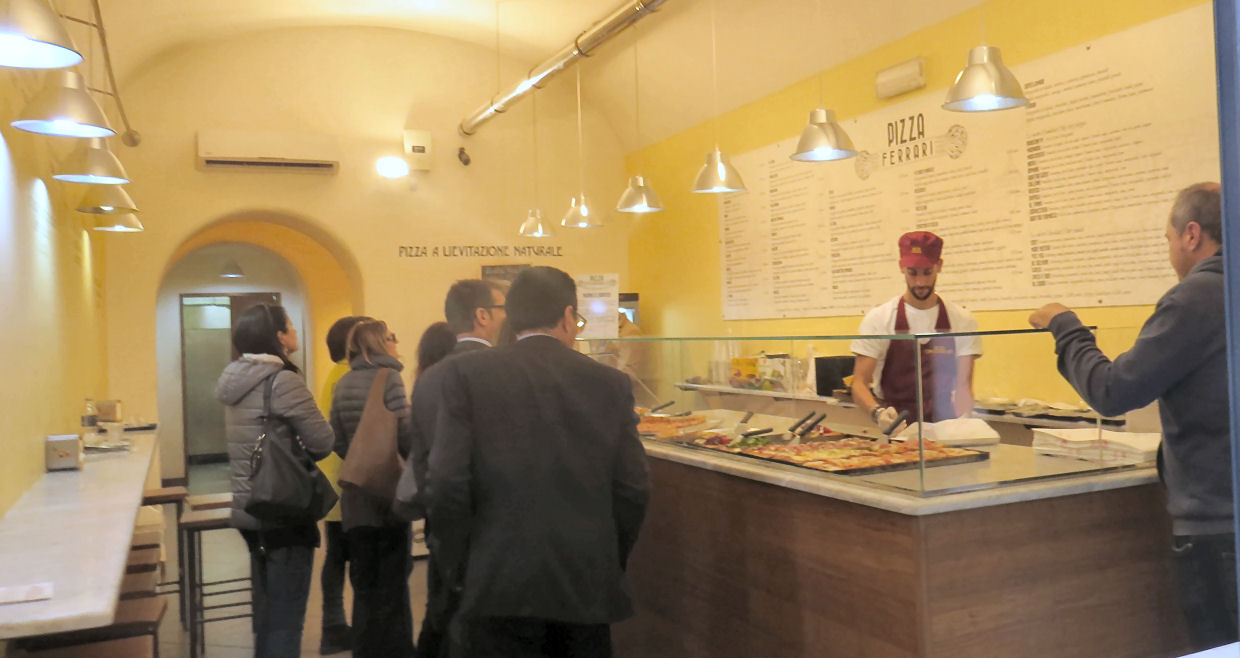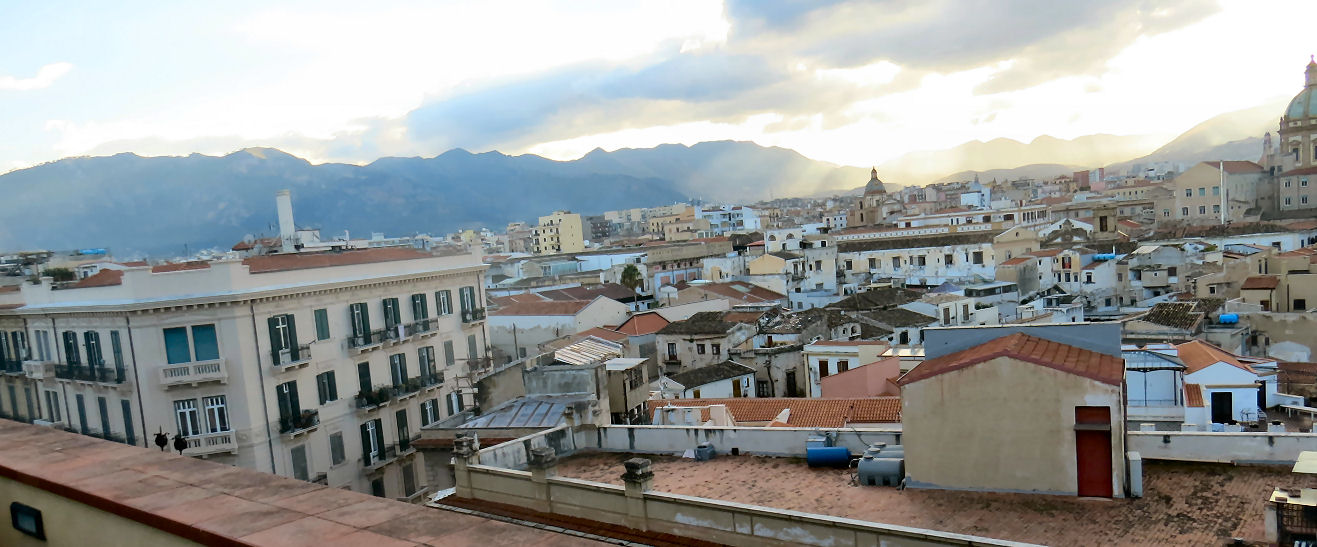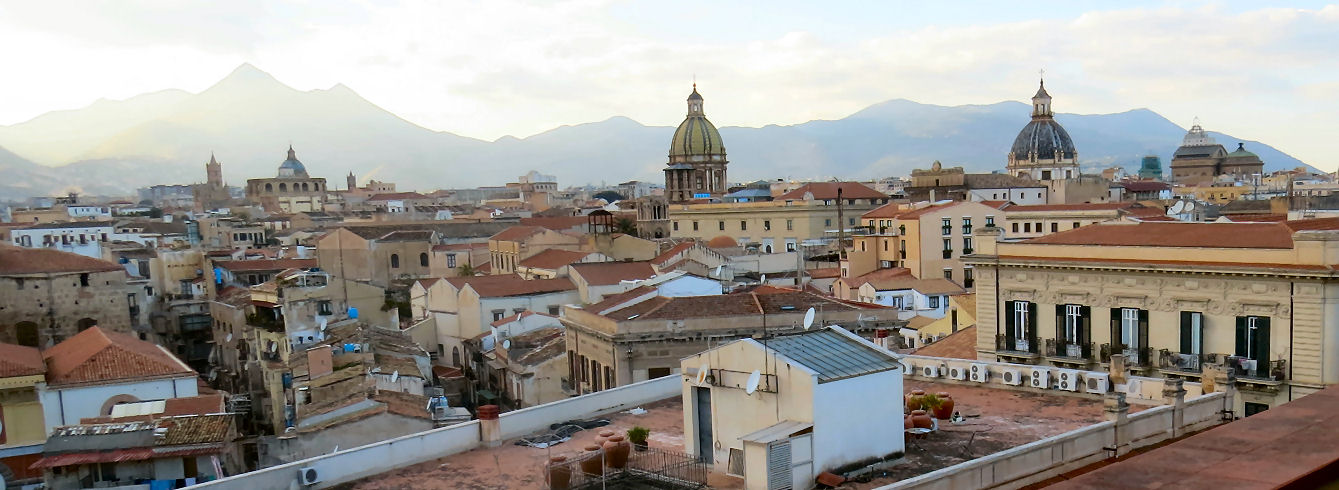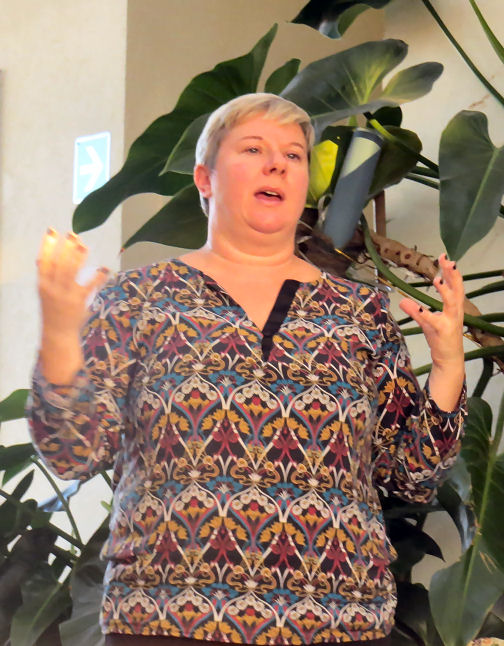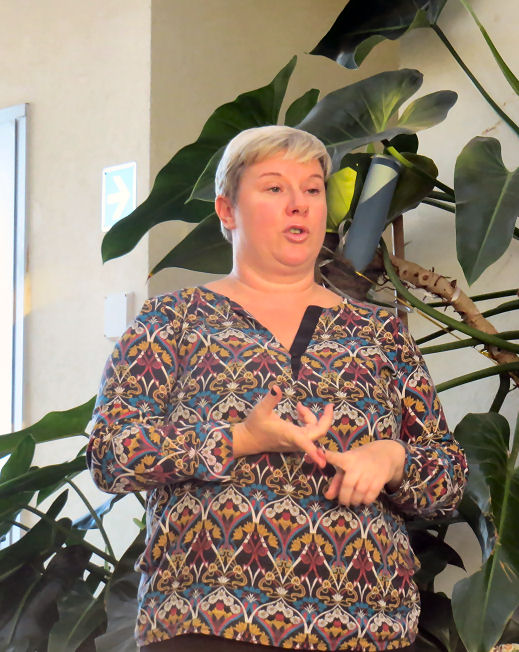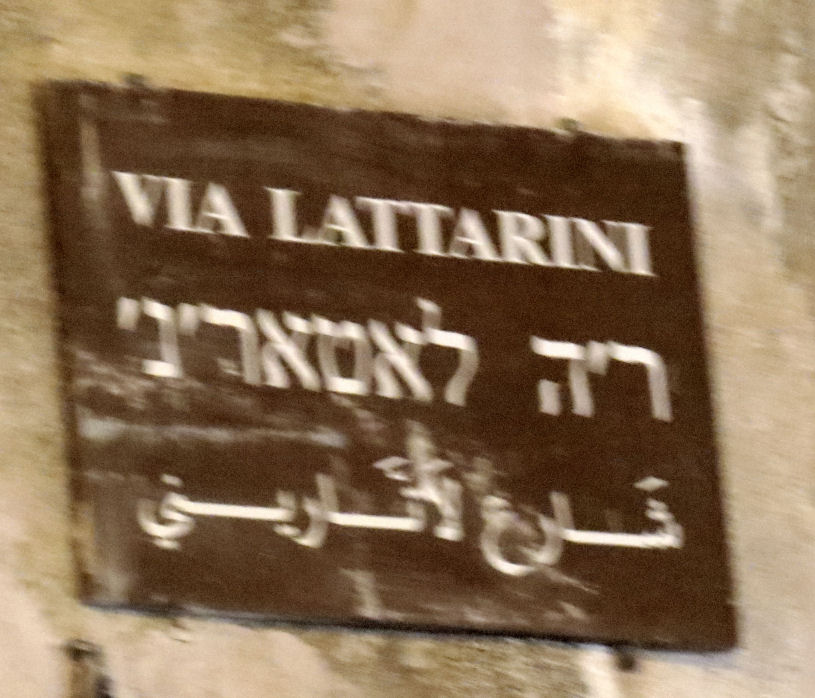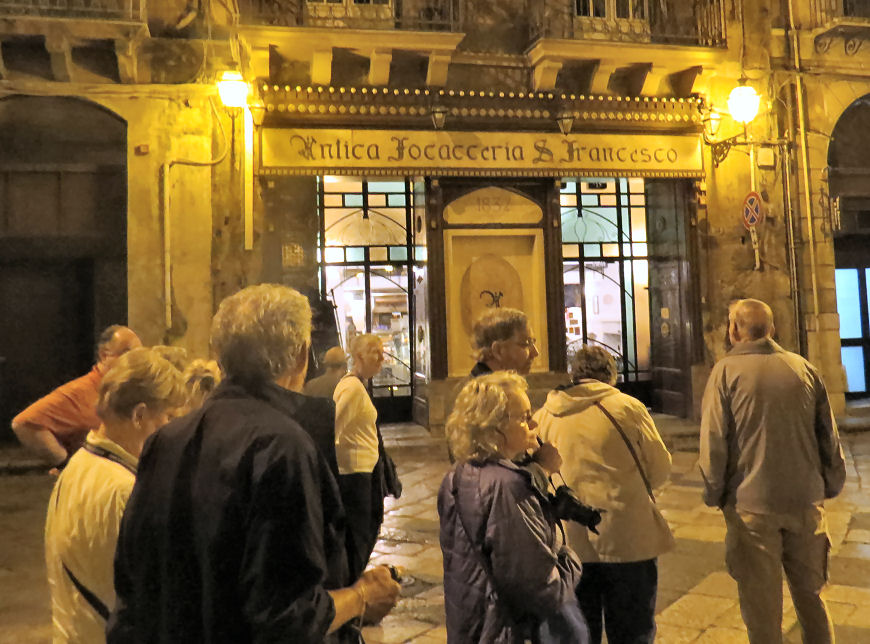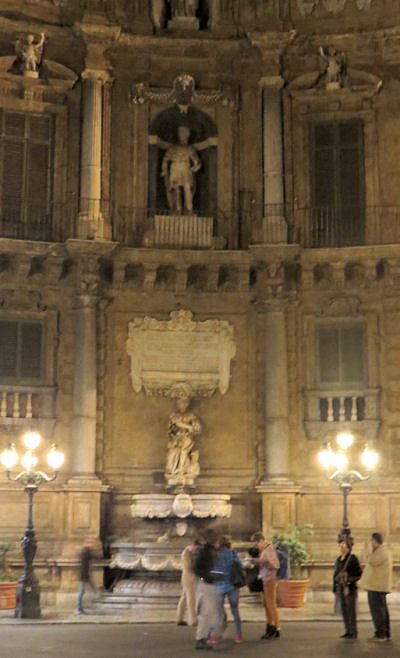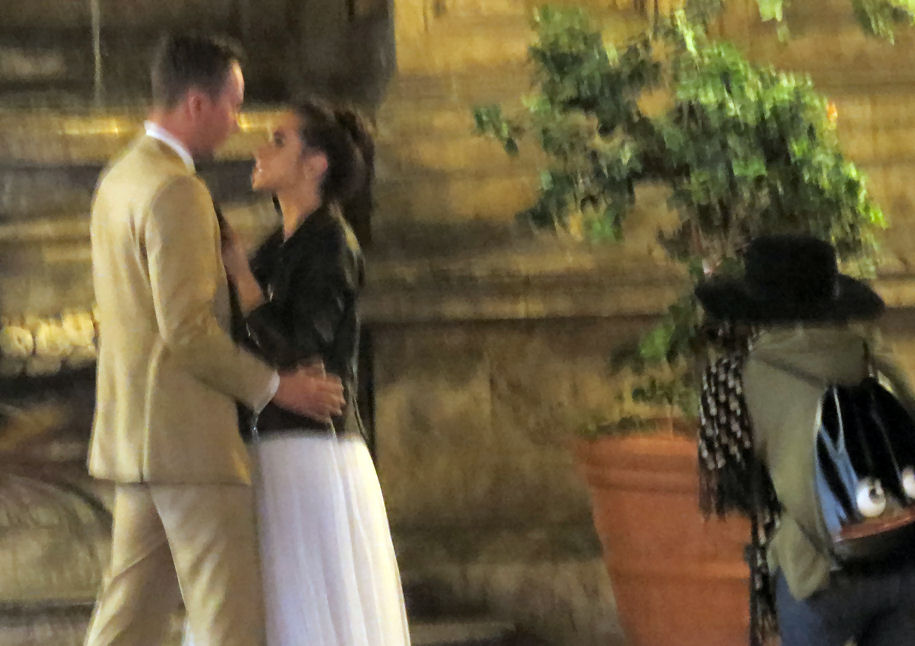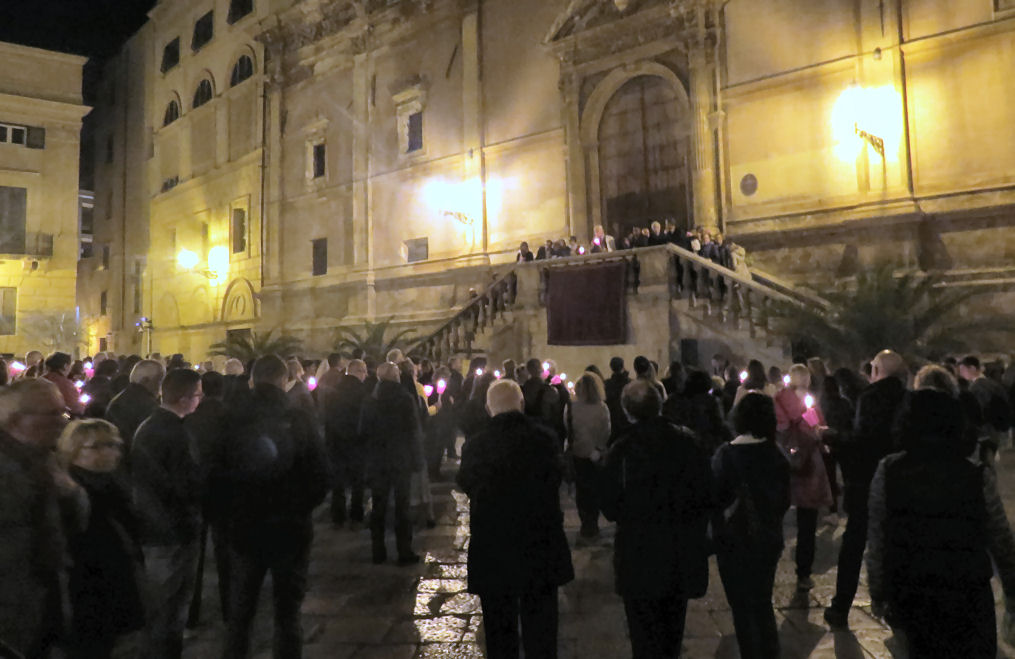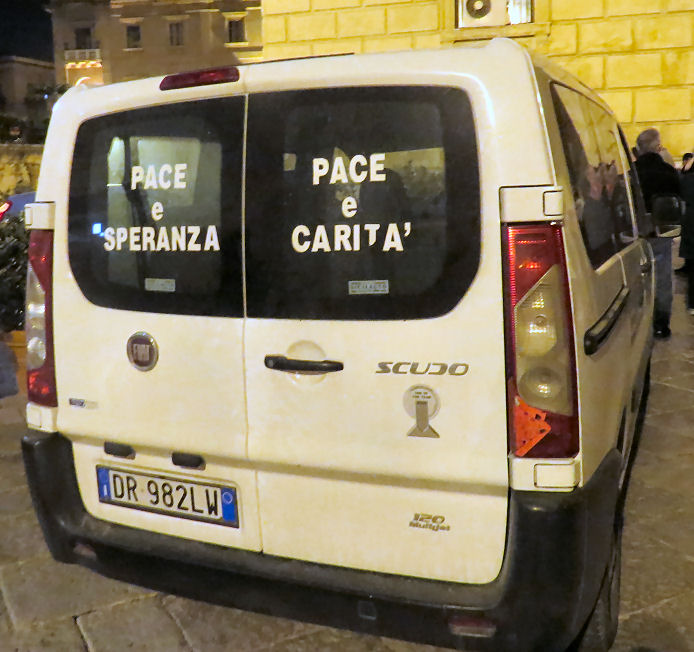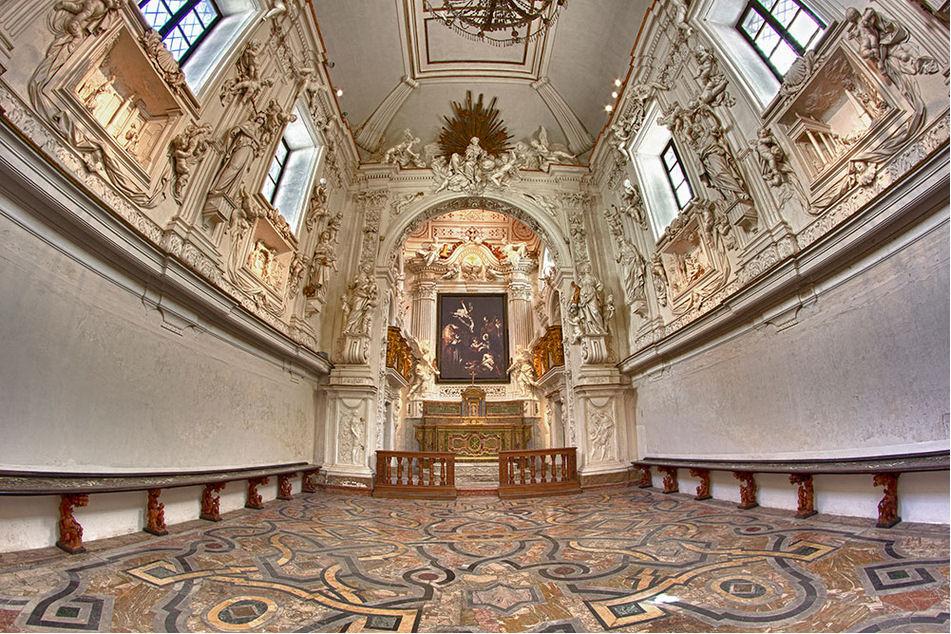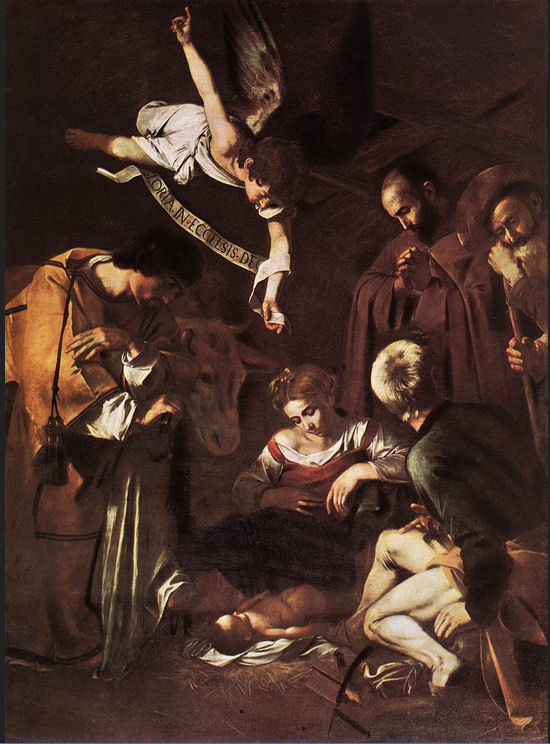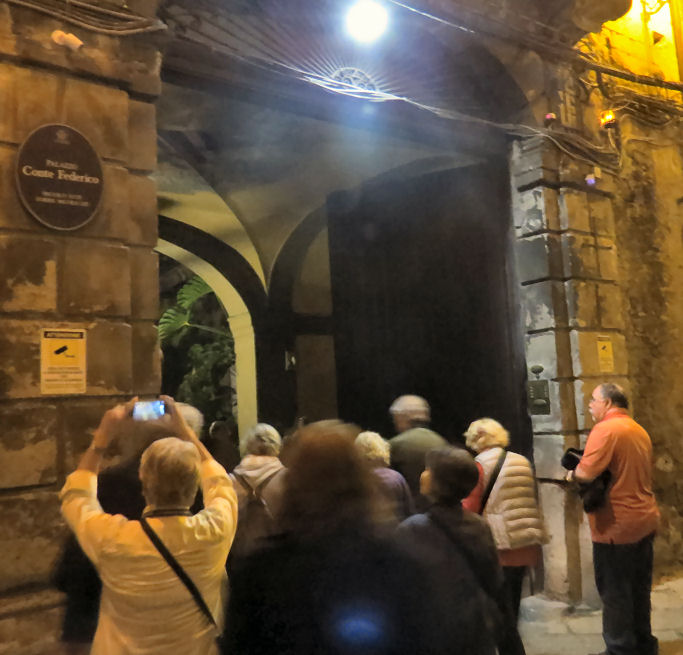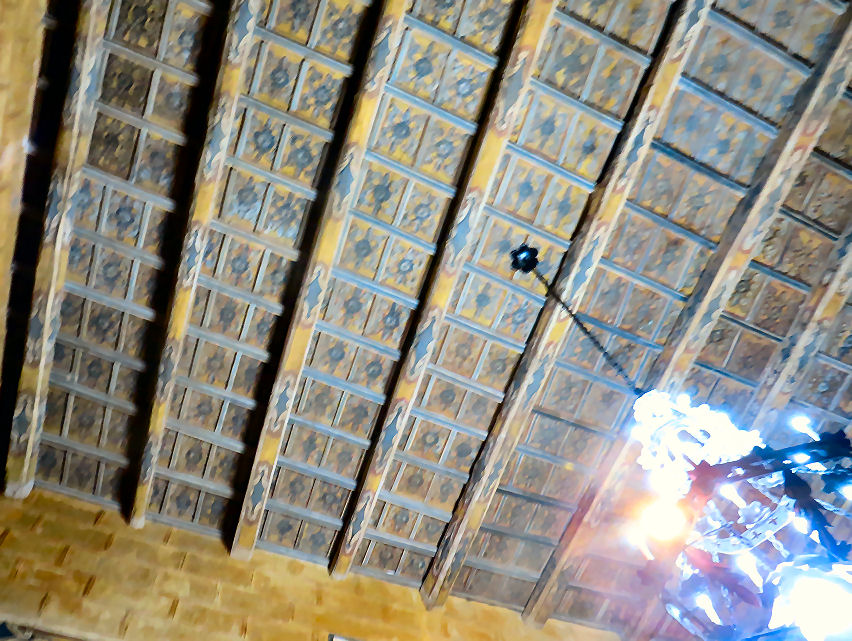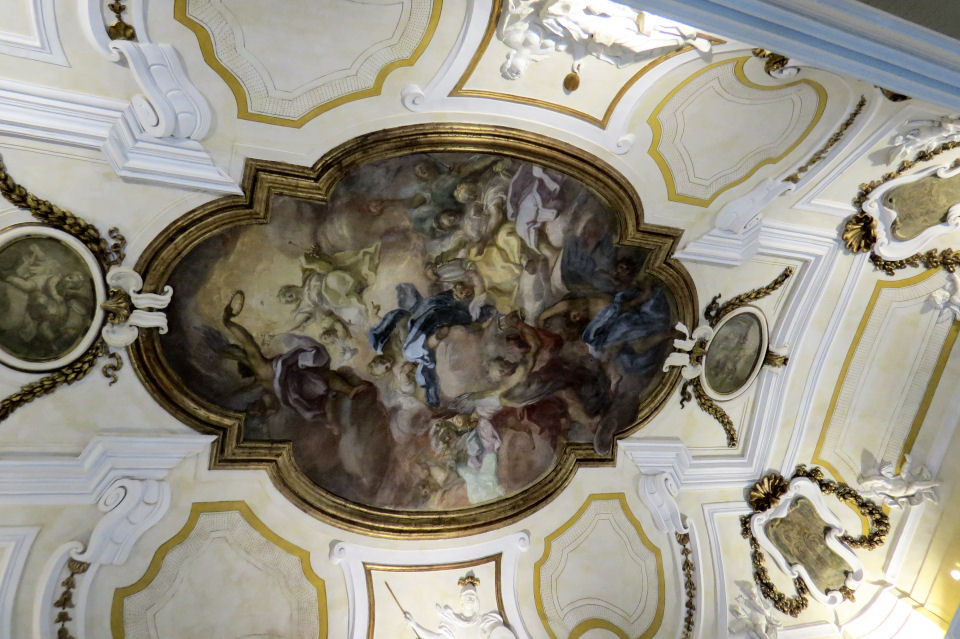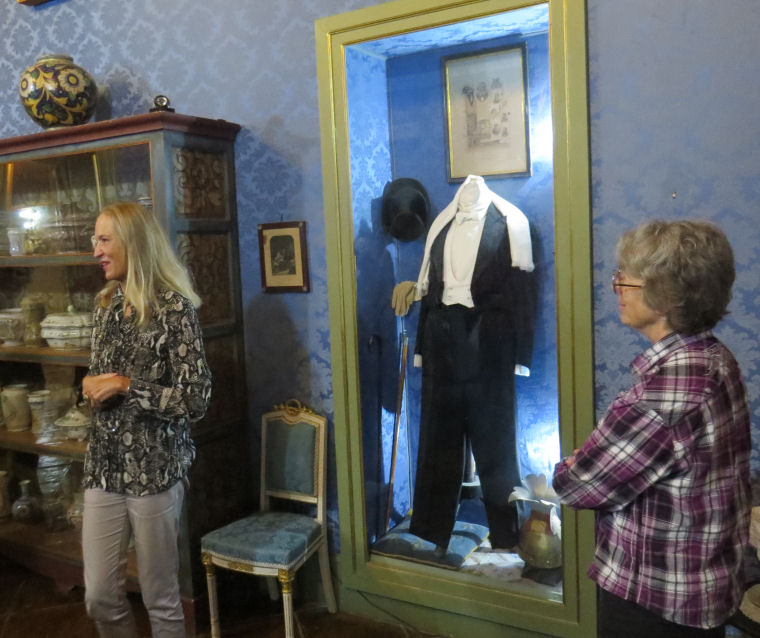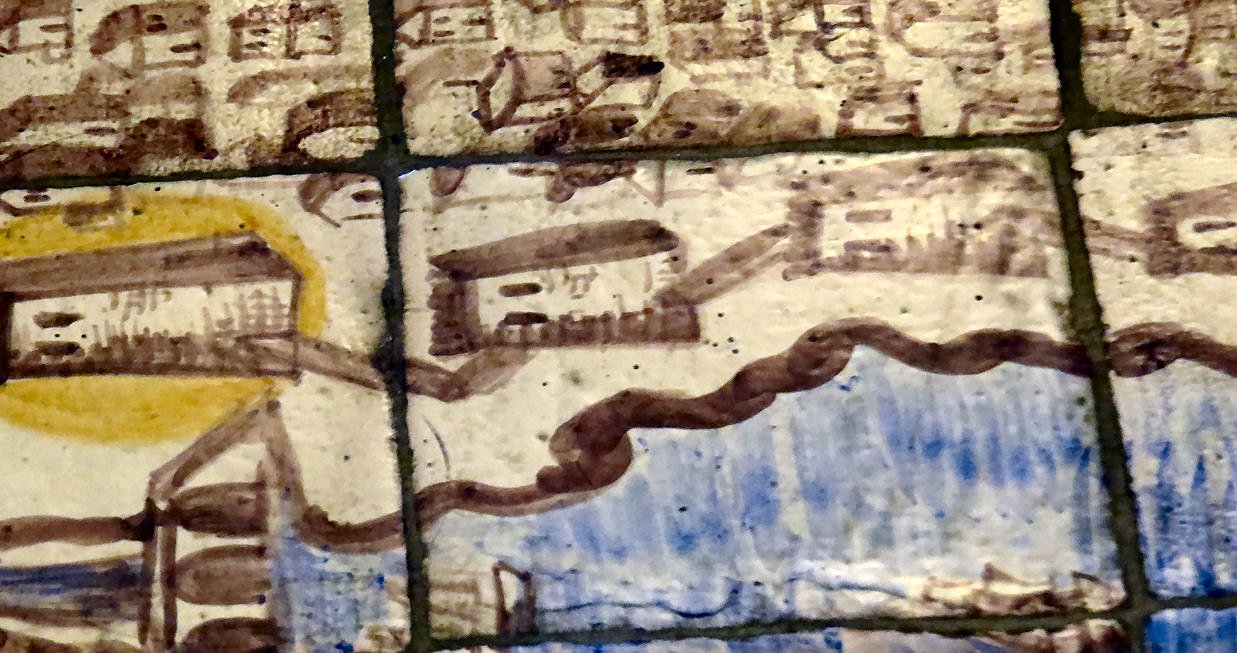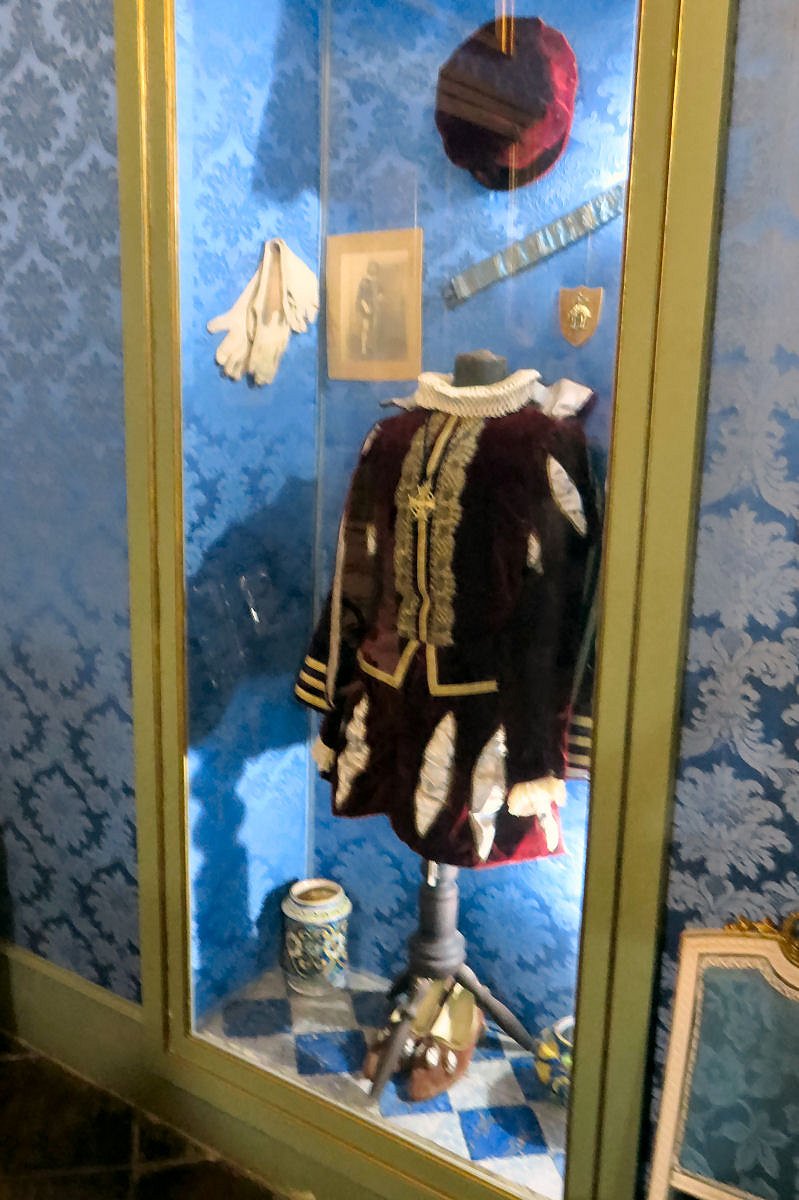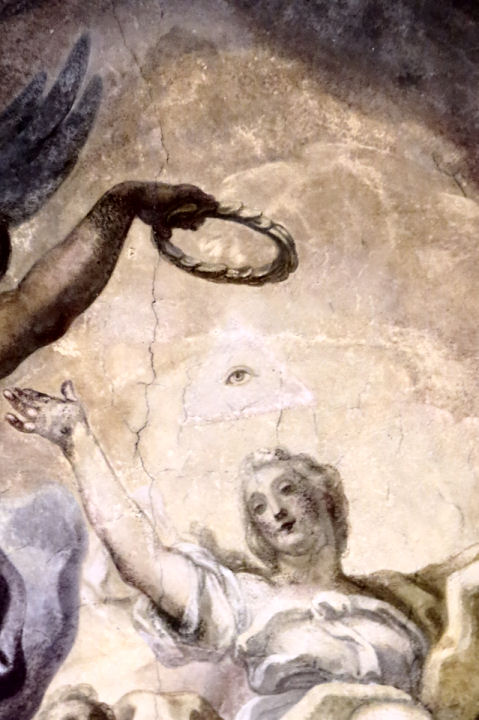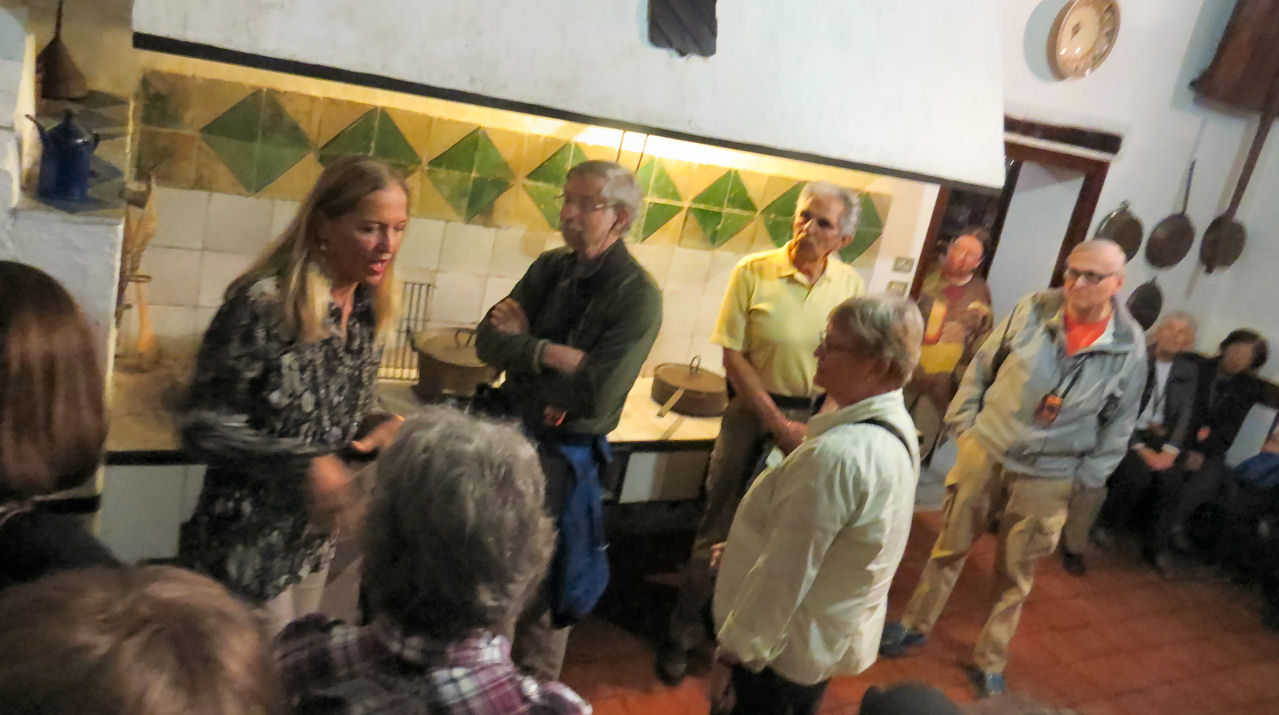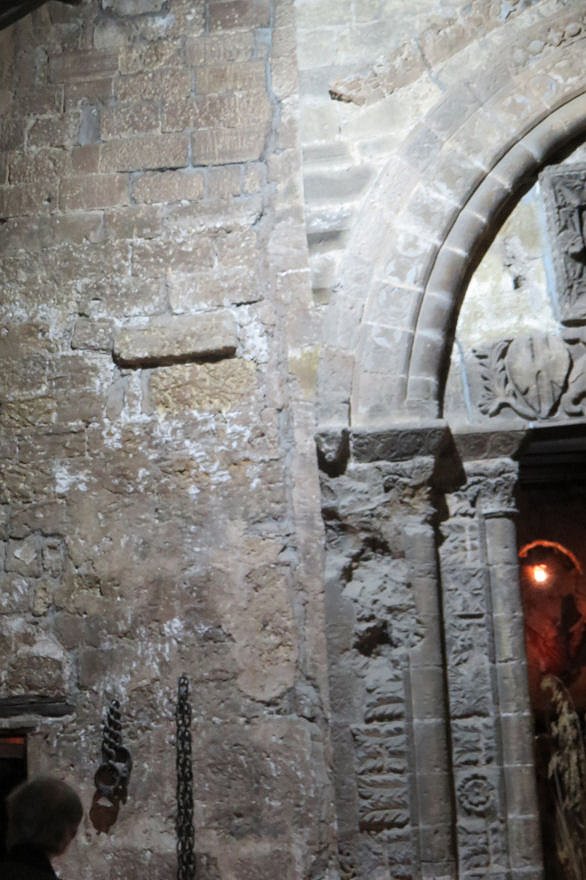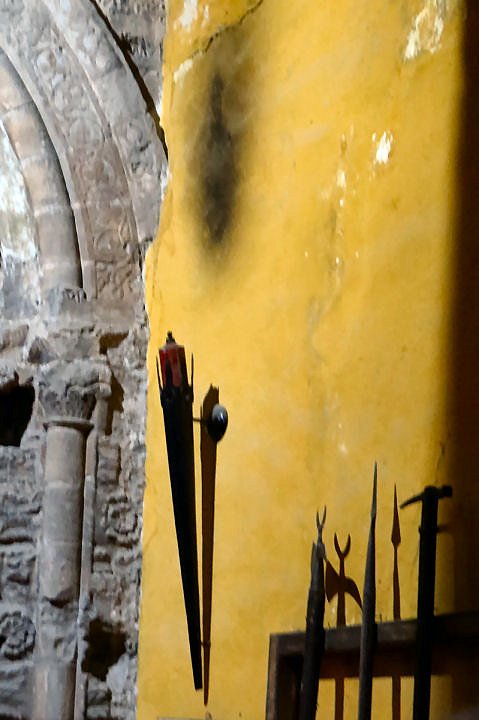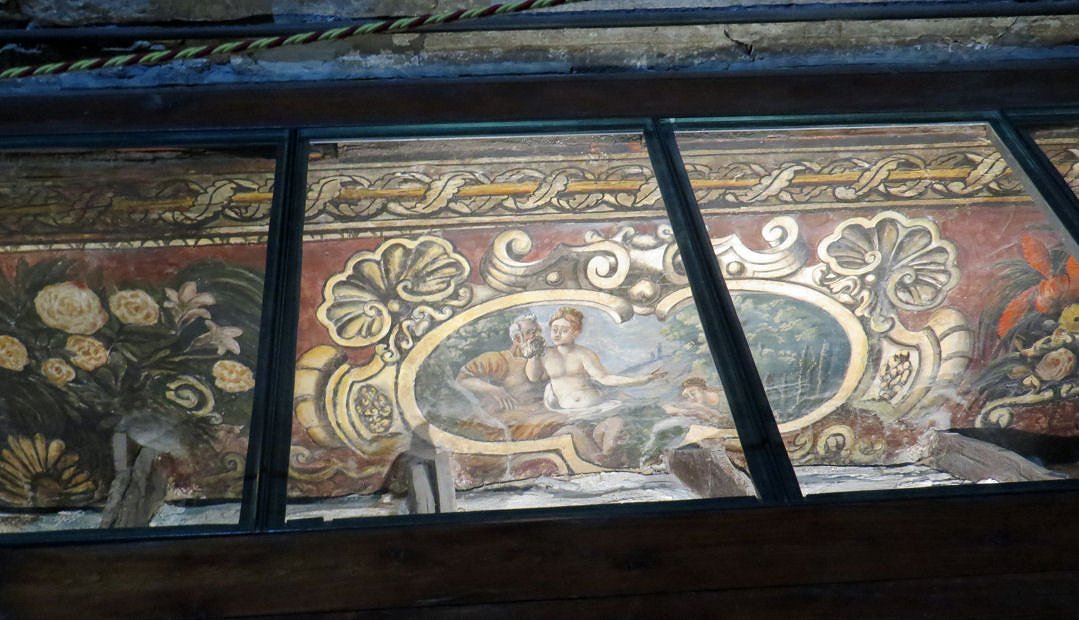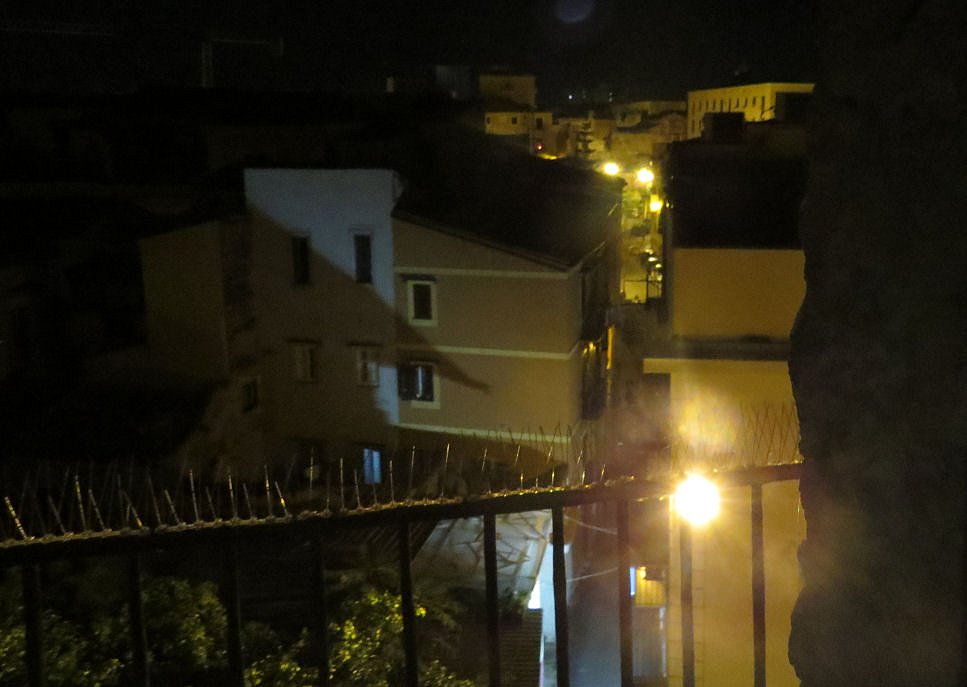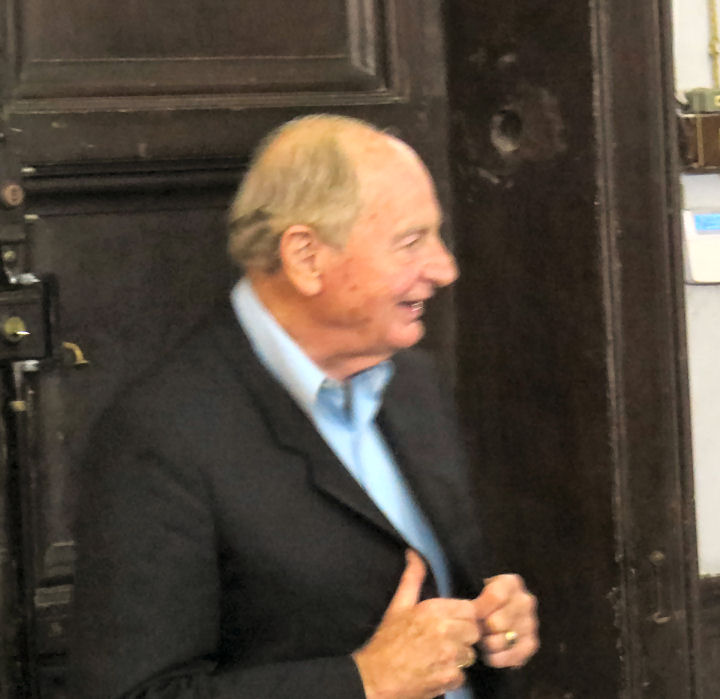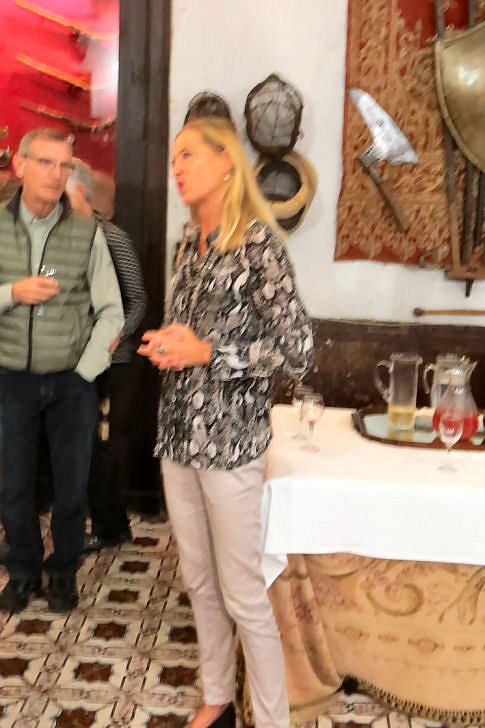
At the first blush of consciousness I looked at my watch. 4:30. I lay in bed for another hour and then arose to see if the Internet connection was usable at this hour. It was still quite slow, but I finally was able to access my iPower account at about 6. I had sent an e-mail to Casey Corcoran, the woman who recommended the restaurant Sacro e Profano. My message had been written in Italian, but it was very short. I was sure that Google Translate would have no trouble. She had not yet responded, and all of my other e-mails were trash.
Our Roman Holiday was over, but we lacked a palace to return to. Instead, we had a 10 o'clock flight to Palermo.
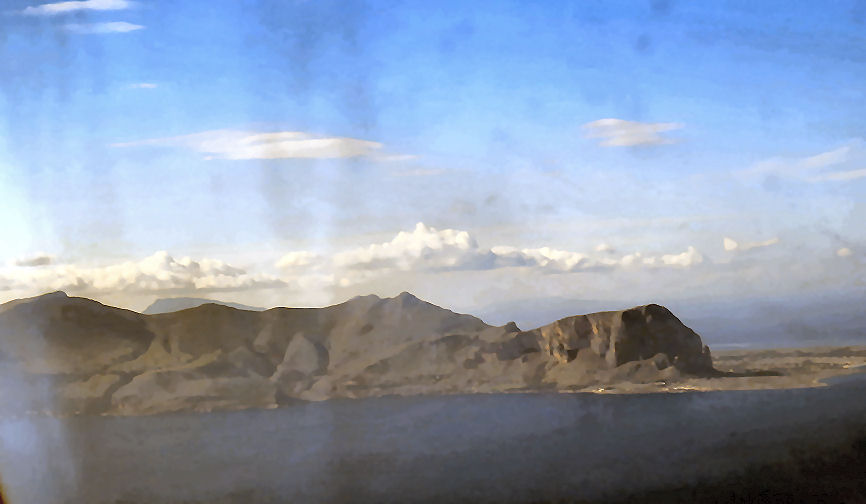
I was already packed. While Sue got her stuff together I read Absolute Monarchs. I got all the way up to Norwich's handling of the anti-pope Anacletus II (1130-1138). I was not enjoying the book as much as I did at first. I liked the author's vivid accounts of select popes. However, he was also quick to attribute to many of them excessive amounts of various qualities, sometimes complimentary and sometimes not. The problem was that the source materials that were easily available were usually extremely one-sided. It was often quite easy to attribute political motives to the authors. In some cases (Liutprand, for example), Norwich warned that a good bit of salt was required before accepting the judgments. However, he seemed to lose this objectivity in other cases. In particular, St. Peter Damien was deemed completely reliable despite the facts that he was cloistered for most of his life (and therefore relying on second- or third-hand accounts) and that his writing included many gross errors. Moreover, whenever any British figures were involved in papal history, Norwich always seemed to judge them pure of heart and competent in every way. The villains were usually Germans.
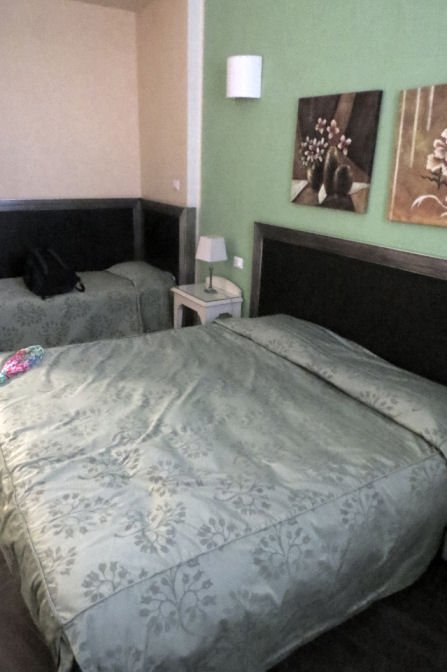
We stuffed our luggage and our bodies into the hotel's tiny elevator and descended to the ground floor at 7:25. We checked out of the hotel and received a bag of food for consumption at the airport. Sue and I were ready to depart, but no driver was present. The receptionist called the company, and the driver appeared in about five minutes.
This driver did not seem to be very professional. Perhaps he was an executive with the company or maybe just an employee in another area. He spoke no English, and, unbelievably, he drove at a consistently reasonable speed. Even though he stopped for gas at one of the tiny service areas alongside the road,[1] we arrived at the airport at the very comfortable time of 8:15. I explained to the driver, in Italian, that our destination was Palermo. He asked about the terminal. I checked my ticket and told him that our gate was at Terminal 1.
We were already familiar with how check-in worked in this airport. You cannot just go up to any Alitalia agent at a check-in desk. The key was to find the right “banco.” I located the big board that listed the flights. Ours was up there; we were required to check in at one of four desks, 164-167. We got in line, and eventually the lady at desk #167 provided us with luggage checks and boarding passes.
We then found a seat and ate our breakfasts. Sue ate all of the yogurt. I downed the toast. It wasn't much, but it would probably keep our stomachs from growling.
Security was easy. As always, they allowed us to keep our shoes on. In open defiance of the expectations of the Transportation Security Agency, the terrorist networks have not imitated Richard Reid, the infamous Shoe Bomber,[2] and sent another moron with a similar plan to any of the European airports.
Once again we were required to take a bus to our plane. It was not as long a drive as when we landed, and this time we snatched seats. Most of the people on our flight appeared to be businessmen. Many were on their cellphones during the bus trip. Nearly every seat on the short flight was filled. The flight attendants served us orange juice and what they called “pretzels,” which were actually elongated cheese puffs.[3]

The views on the flight into Palermo were rather thrilling. When we first caught sight of the island. it looked so mountainous as to be almost uninhabitable. Well off to the right we could see some signs of civilization,[4] but the plane actually banked to the left. Eventually a flat place near the shore[5] could be seen amidst all the steep hills and mountains. Nearly every square inch seemed to be occupied except for the runways at the Palermo airport.
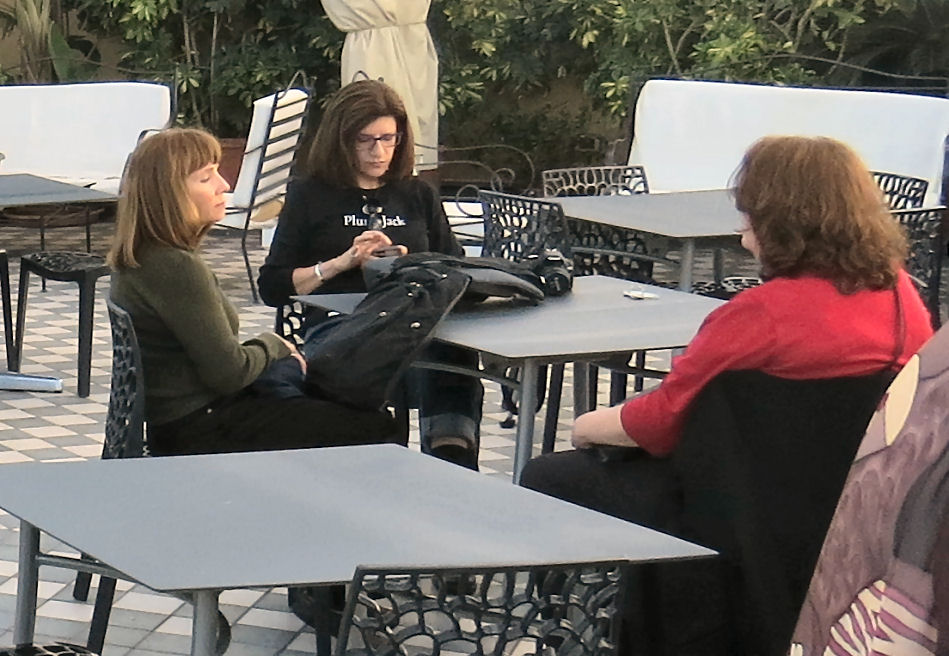
After landing we had another bus ride to the terminal even though several gates were devoid of planes, and there seemed to be jetways. Like Uncle Joe, Sue and I were movin' kind of slow that morning. We were the last to retrieve our luggage.
We had read that there was an inexpensive shuttle from the airport to the train station, and the material from Rick Steves had claimed that the walk from the station up Via Roma to the hotel was not difficult. Even so, Sue wanted to take a cab. She did not fancy maneuvering around on crowded city streets while burdened with a backpack and a suitcase. It turned out to be a very long drive. I don't know if the driver took the shortest route, but the total bill was nearly €70, much more than I expected.
We checked in to the Ambasciatori Hotel and took the elevator up to the third floor. It was the first Otis that we had noticed in Europe. To operate it one had to open three separate doors, enter the car, and then close the three doors in the opposite order.
We found our way to room #309, another nice room. I was becoming rather hungry. Sue called the desk, and the man there recommended that we walk up to Via Vittorio Emanuele, where, they assured us, we would find many places to eat.
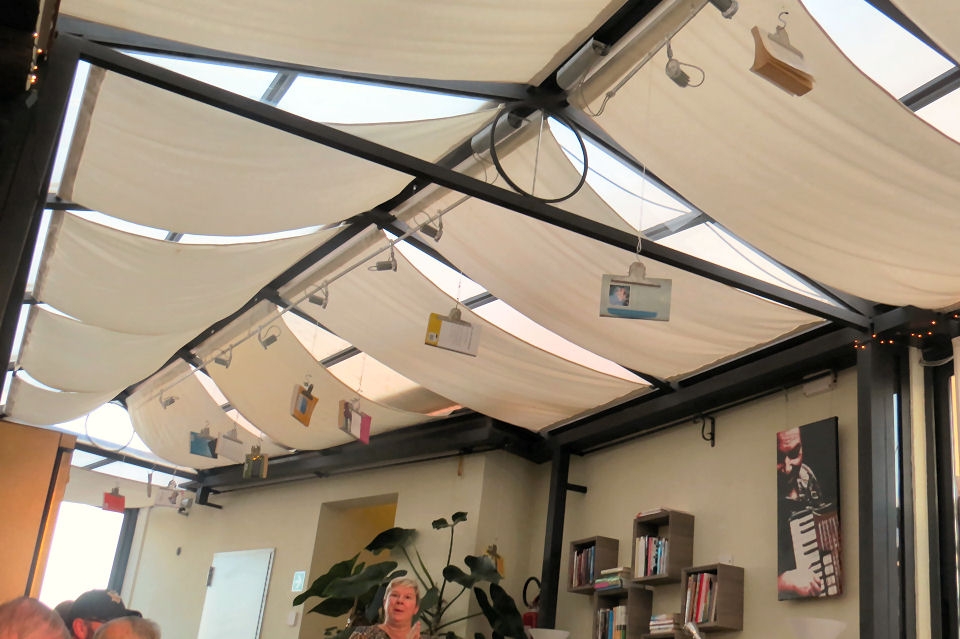
Via Vittorio Emanuele was farther than we expected. We turned right there and walked another few blocks before we found Pizzeria Ferrari. It was basically a lunch counter that sold pizza by the slice. I had two slices of pizza. I ordered by pointing because I was uncertain whether “fetta” was proper in this situation. I also purchased a Coke Zero.
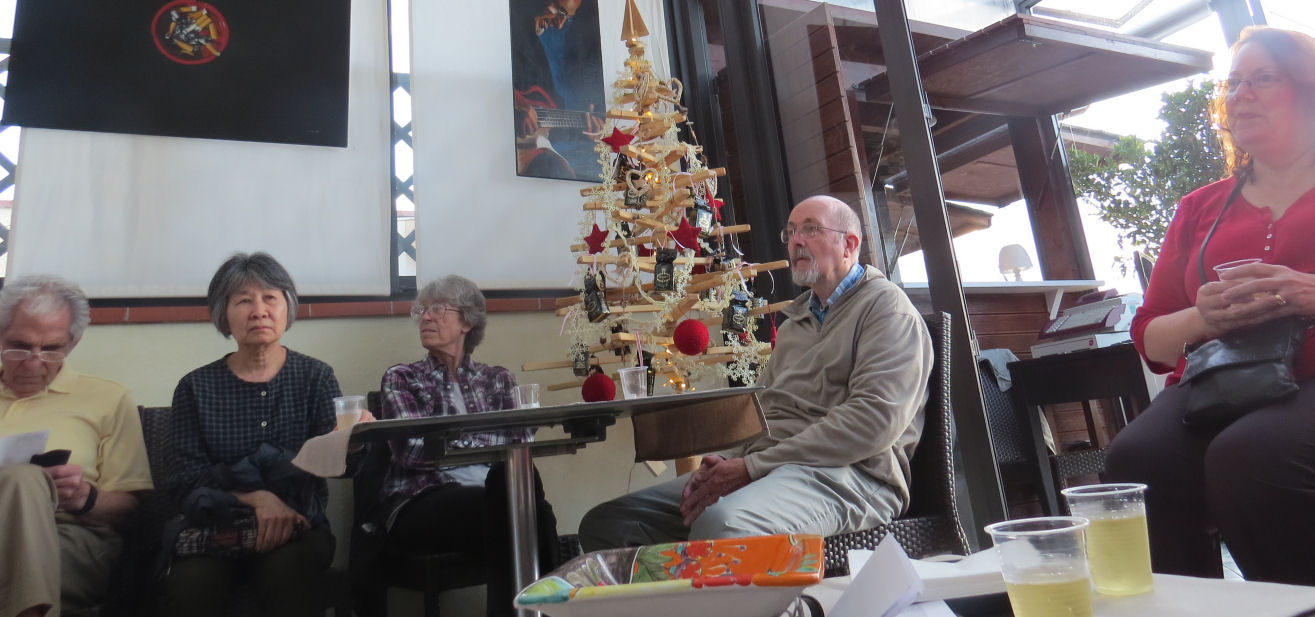
We ate at the counter. The pizza was, well, not close to hot, but I enjoyed it well enough. When in Palermo, do as the Palermitani do. Besides, it was cheap, and the restaurant was not crowded. It seemed to specialize in take-out and delivery.
Back at the hotel I spent the time until the meeting, which was scheduled for 3:30, working on this journal. I had lots of experience doing this. I knew that the important points were to write every day and to read it over a day or two later to make sure that it still made sense.
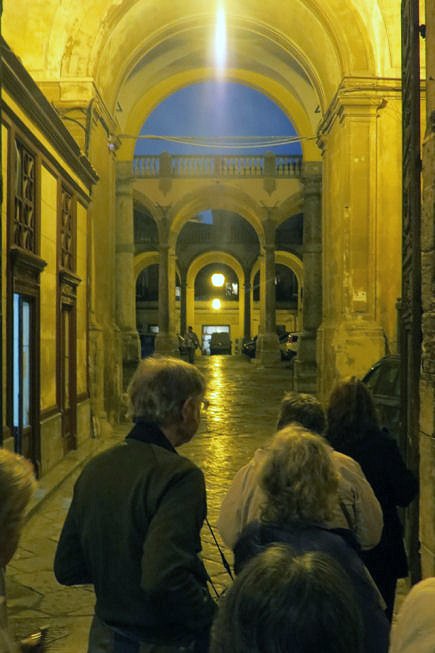
At about 3:20 I was shocked to hear Sue announce her desire to walk up to the orientation meeting. We were on the third floor; the breakfast room in which we were meeting was on the seventh floor. I could never remember her making such an energetic decision in the forty-five years that I had known her.

The views from the rooftop were striking. Several other people were taking photos when we arrived. I took quite a few as well.
We met our tour guide, Susanna Perrucchini, who was born in Padua and lived most of her life in Rome and Spain. She spoke English very well. This would be something new to Sue and me; the three guides on our other Italian tours had been Americans who had to learn about Italy.
We also met all of the other members of the tour group. Some had arrived a day or two early and had already made connections with other members. Most of the group had been on previous Rick Steves tours. My new buddy, Ann Oglesby, originally from Texas but now living in Frankfurt, had a dozen under her belt.
The biggest surprise was the geographical distribution of the people. Six of the twenty-five participants were from Connecticut. Another two hailed from Massachusetts, including Sallie Baldwin, who lived in Longmeadow, the town immediately to the north of our hometown of Enfield, CT. Only one couple was from California, and both Washington and Oregon were unrepresented. Evidently Rick Steves was no longer a West Coast operation. If the annual meeting were moved to somewhere central, such as Kansas City, Sue and I might attend.
The rest of our roster consisted of Laurie Coles and Leslie Baughman from the Dallas area, Rollin and Joyce Flower from Kinderhook, NY, Wendall and Carol Heinrichs from just outside of Winnipeg, Emily Kao from Boston and her brother P.C. from Las Vegas, K.B. Low and Swee Mee Phang from Malaysia and Toronto, Bob and Barb Metranga from Sacramento, Tom and Rose Mary Meyer from Minneapolis and Tucson, Barbara and Nick Pissaro from Westport, CT, Diane Snyder from San Antonion, Bob and Martha Turner from Marietta, GA, and Karen Williams and Jon Morosini from Groton, CT.Susanna outlined the plan for the next two days. Breakfast was served beginning at 7:30 in the rooftop room in which we were meeting. At 9 on Wednesday we would meet our tour guide, Jackie Alio. She would escort us on a walking tour of Palermo's street life and a short bus trip to Monreale to see the Norman cathedral there. Afterwards we would be introduced to street life in Palermo. On Thursday our bus driver, Giuseppe, would take us to Segesta, where we would feast and then be given a pastry demonstration by a famous Sicilian chef. After a side trip to Erice we would spend the night in Trapani.
Susanna also described how Rick Steves tours worked. The only changes since our last trip seemed to be that Susanna always posted near the hotel's registration area detailed instructions for two days rather than one and the use of the “whisper” system of wireless communication. Laundry service would be available in Trapani and Syracuse. Susanna indicated that in most places the WiFi connections were pretty good.
We learned that several of the places on our itinerary were associated with the fictional detective, Inspector Montalbano. He was the protagonist of a set of novels and stories by Andrea Camilleri that had been turned into popular movies[6] by RAI, Italy's publicly owned television network. She seemed to be quite surprised to learn that we were unacquainted with any of this.[7]
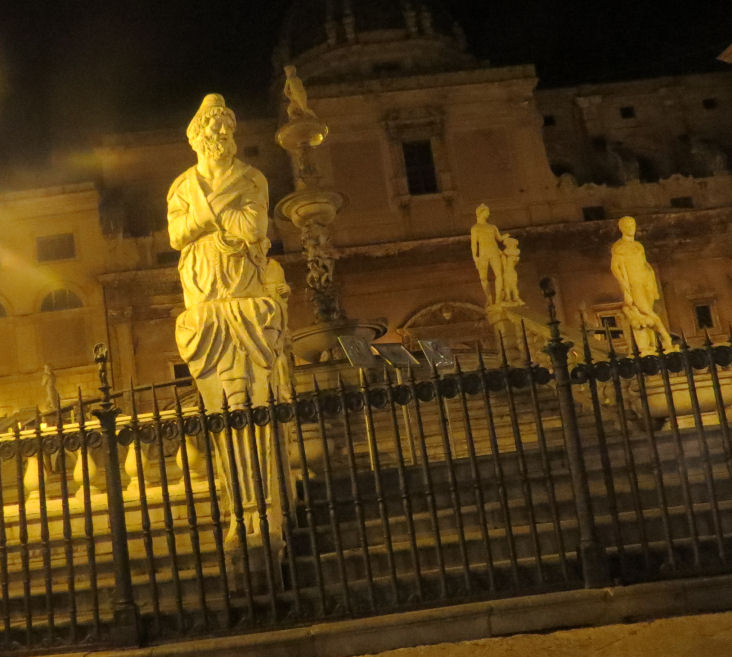
After a short sojourn to our rooms we met in the lobby at 5. Susanna handed out the whisper units, and we performed the first buddy check. Sue's buddy was P.C. I doubted that he knew what he was in for.
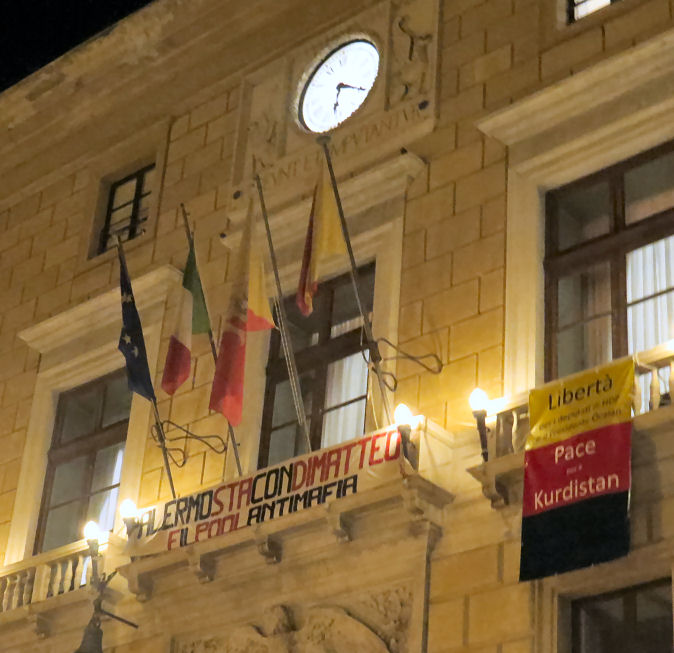
Susanna explained that Palermo, which had been settled by the Phoenicians a very long time ago, was in 2016 home to both the very rich and the very poor. She said that some places were quite decrepit, but looks could be deceiving. Behind an unprepossessing door might lurk great wealth. The government was putting money into the city because people were leaving.
In one piazza Susanna pointed out that the incandescent lights there gave off a very warm glow. She expressed the hope that the modernization projects did not eliminate this effect.
In one area of the city street names were posted in three languages, Italian, Arabic, and Hebrew. This indicated that Jews lived on those streets during the four-century period during which Palermo was tolerantly ruled by Arabs.[8]
We then walked past a peaceful candlelight demonstration that was carefully watched by the police. The speaker was talking slowly enough and distinctly enough that I could understand nearly everything that he said. However, I did not write anything down, and my aged brain can no longer retrieve it.
Near the ancient church of San Francesco d'Assisi was a restaurant that specialized in Sicilian snacks and the Oratorio of San Lorenzo. We stopped into the latter, where Susanna introduced us to Luisa, who conducted a short tour of the oratorio. It served as a place for the guild to meet and pray that was built in the late 1400's. The interior was remodeled in the late seventeenth century to include a large number of stuccoes by Giacomo Serpotta.
A huge Caravaggio depicting the Nativity was stolen from the oratorio in 1969 and has never been recovered. It remains one of the greatest unsolved thefts of all time. Its position behind the altar has been filled by a copy that was executed from a photograph taken in 1967.
The stuccoes include a very large number of playful angels (putti). Some of them were, in Luisa's words, naughty. There were also ten life-sized statues of women that were supposedly depicting various virtues. I could not help but notice that many of those virtues required the ladies to bare at least one breast. I doubt that there were very many females in the group that frequented the oratorio.
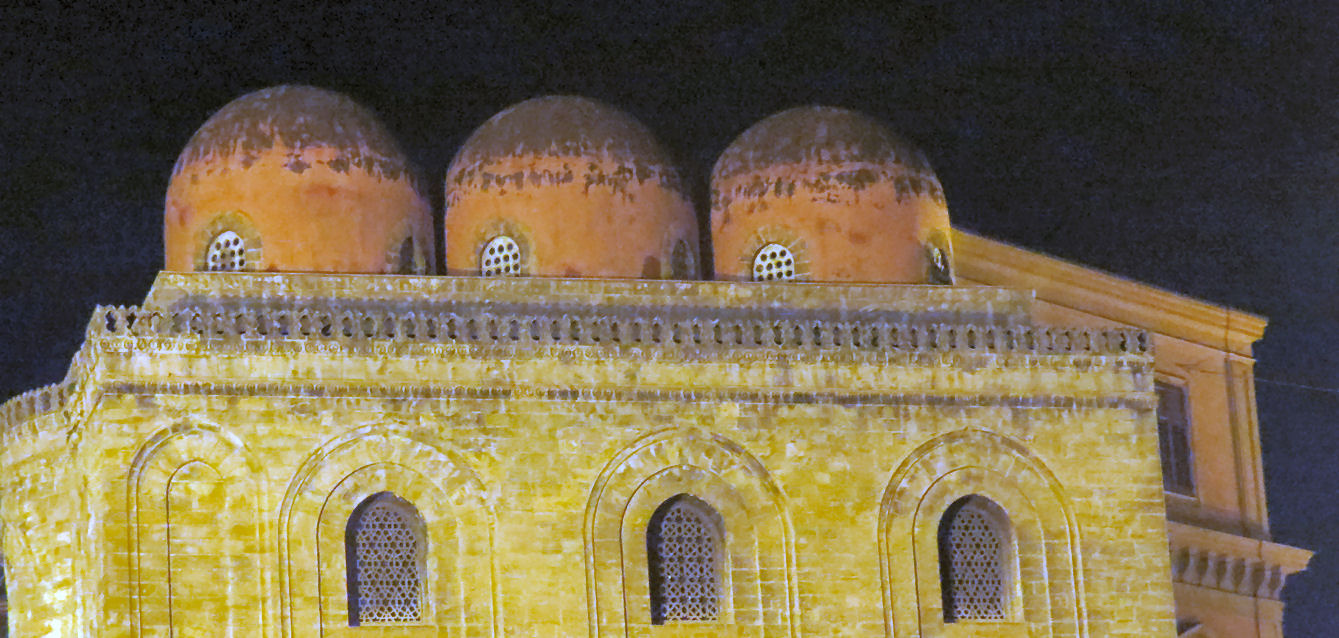
The chapel on the left was devoted to St. Francis. The one on the right was for St. Lawrence, who is always shown with a grill because he was allegedly barbecued to death.
Susanna explained the meaning of the bizarre flag of Sicily. It depicted the three points of the island using human legs. In the middle was a Medusa. Four flags were flown on government buildings—the E.U., Italy, Sicily, and Palermo.
We passed through the Piazza della Vergogna, the popular name for the Piazza Pretoria. “Vergogna” is the Italian word for shame. Susanna told us that the nickname came from the many statues depicting naked men around the fountain in the center of the square. Evidently the nuns in a nearby convent spent an inordinate amount of time admiring those sculptures.
At last we arrived at the Palazzo Conte Federico, which was near the harbor. We met the contessa, who explained that her husband, Count[9] Alessandro Federico, was descended from Frederick of Antioch, the illegitimate son of Emperor Frederick II. This astounded me. I had long been an ardent fan of Stupor Mundi (Wonder of the World), as the emperor was popularly known in those days. I knew that Pope Urban IV had hired Charles of Anjou to rid Christendom of Frederick's descendants for good and that Pope Clement IV had actually elevated the effort to the level of a crusade. Charles's forces eventually killed Manfred in battle and executed young Conradin. The Hohenstaufens were never heard from again; I assumed that all of Frederick's line had been eliminated. The contessa asserted that Frederick of Antioch had survived the pope's wrath because he was illegitimate.[10]
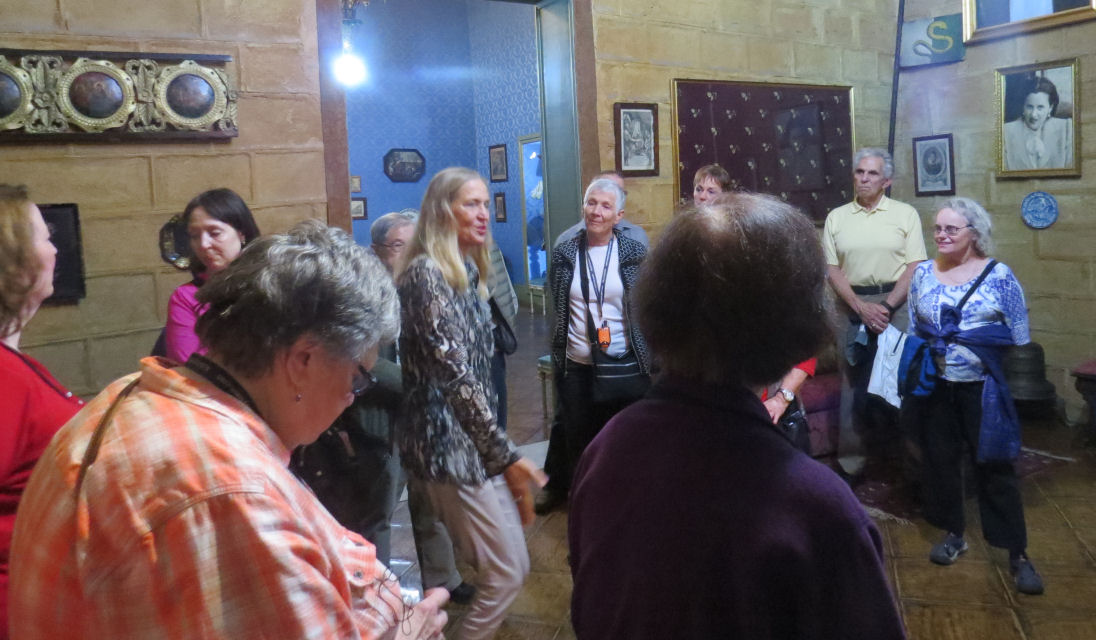
I asked the contessa who Frederick of Antioch's mother was. She identified her as Maria of Antioch. Maria probably entered into Frederick's retinue with Frederick's second wife, Yolande of Jerusalem, who had been married (by proxy) to the emperor at the age of thirteen.
We learned that the count had married our hostess when she was much older, twenty. She admitted to being a little taken aback by the idea of living in a museum. She did some redecorating to make the house more livable without changing the feel. Ikea helped.
She showed us a big room that was decorated with Masonic symbols. She proudly reported that the Freemasons, who embraced the principles of the enlightenment, met in this room. Garibaldi and Serpotta were both active Freemasons during a period in which membership in the organization was a capital crime in areas controlled by the papacy.
We learned that Frederick of Antioch was buried in the cathedral in Palermo,[11] the same place in which Frederick II, his father, Emperor Henry VI, and many other famous kings and queens were entombed. Frederick II's ornate porphyry sarcophagus was opened in 1781, and three corpses were discovered within.
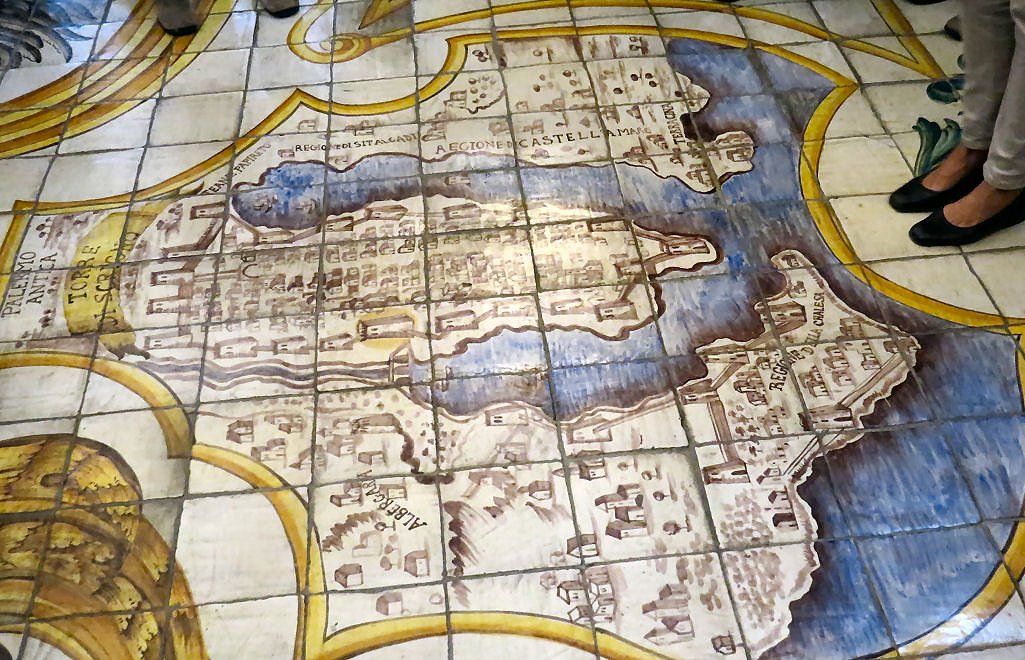
We saw a great many interesting things in the palace. Inlaid in one of the floors was an ancient map of Palermo that showed the location of the two rivers that were now extinct. The contessa showed us the location of the Scrigno Tower, the only one of the many towers from the twelfth century that was still standing. At some point this tower had been incorporated into the Palazzo Conte Federico, and we got to see part of its interior.
We also saw some of the trophies that the count had won by racing antique cars. The contessa admitted that she always knew that the cars would be #1 in his heart, but she was content to strive to be #2. I suspected that she had overachieved. The couple had two sons, one of whom had ginger-colored hair, which he may have inherited from his imperial ancestor.
The contessa did not claim to be descended from Stupor Mundi, but I found her absolutely astounding. She was originally from Austria and at the time of our visit she gave language lessons.[12] Emperor Frederick could read and write seven languages. The contessa almost certainly knew German, English, Italian, and Sicilian. It would not surprise me to learn that she could speak three more. She was also a swimmer; she had so many medals that she hung them in loose groups rather than in display cases.
In the ancient kitchens we saw lots of familiar-looking items. Someone guessed the function of the most unusual one, a machine for kneading dough.
The tour was capped off with glasses of champagne in a room filled with suits of armor and antique fencing gear. The contessa, who admitted to being a professional pianist, then favored us with an a capella rendering of a song in Italian that praised the natural beauty of Sicily. OMG: all this and perfect pitch!
We left the castle and walked to the site of our supper, Ristorante Pizzeria Carlo V. I sat next to Sallie and explained to her who Frederick II was. The other people at our table were the Turners, Karen Williams, and Jon Morosini. I was not too impressed with the fare that Susanna had chosen for us. The pasta was penne or something similar with tomatoes, cream, basil, pine nuts, and almonds. The main course was eggplant, mushrooms, and a salad. A cassata (very rich Sicilian cake) was the dessert. A small digestivo was the finale. Everything tasted pretty good; maybe my expectations were just too high. I anticipated nothing but outstanding food in Sicily.
We then walked back to the hotel. When I got to the room I felt a little feverish and I had a cough that I had difficulty shaking. I had brought a bottle of acetaminophen with me. I took a couple of capsules and got to sleep with no difficulty.
[1] The price was close to $6 per gallon. In the U.S. at the time the price was about one-third of that.
[2] Reid, a native-born Brit, boarded a Boston-bound plane in Miami with explosives in his shoes on December 20, 2011. Once on board he tried unsuccessfully to light his shoelaces. He had been incarcerated ever since, and for sixteen years millions of Americans had been taking off their shoes at airports in his honor.
[3] San Carlo was the primary purveyor of potato chips (patatine) and other such snacks in bags.
[4] Probably Trapani or Marsala.
[5] Yes, we saw the plain from the plane.
[6] Made-for-TV movies are called “fiction” in Italian.
[7] Actually, I had read one paragraph from one of the novels in one of my Italian magazines.
[8] They spoke Arabic, but they were not all from the Middle East. The Berbers were from Northern Africa. Eventually control was assumed by the Fatimids and Kalbids, which were centered in Cairo.
[9] I realize that it was inconsistent to call him "count" and her "contessa.". Susanna always called her "the contessa," and it seemed silly to call him "the conte."

